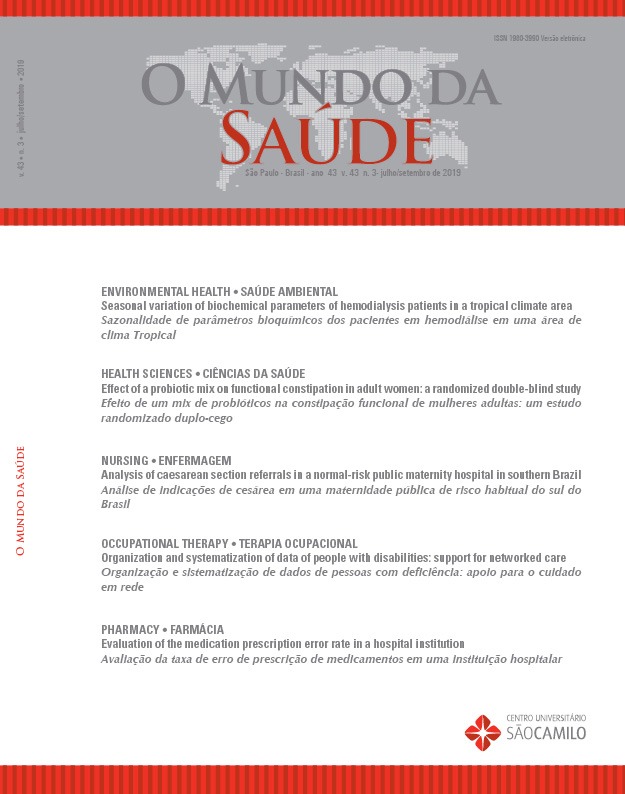Characterization of cancer patient care in a public hospital in the Federal District
DOI:
https://doi.org/10.15343/0104-7809.20194303747766Keywords:
Oncology, Public health, AssistanceAbstract
Access to cancer treatment represents a major public health problem and has been the subject of governmental actions in view of the financial impact, social cost and how it affects the lives of individuals. An exploratory study was conducted through the evaluation of medical records of 135 cancer patients treated by the Oncology service of a public hospital in the Federal District (FD). The general objective was to characterize the care of cancer patients, to map the flow of care of patients and to identify sociodemographic profiles. The sample consisted of men and women, aged between 26 and 83 years, coming from 23 administrative regions of the FD. Breast cancer was the predominant diagnosis among patients (n=28). Chemotherapy was the most indicated treatment (n=83), followed by external radiotherapy (n=41), surgery (n=14), hormone therapy (n=9) and brachytherapy (n=5). In addition, the average days between the first consultation and the start of external radiotherapy, chemotherapy, surgery and hormone therapy were 61, 19, 93 and 28 days, respectively. Cancer stage II, III and IV patients had a mean waiting time of 61, 100 and 35 days for external radiotherapy, respectively. The overall mean interval between diagnosis and initiation of treatment was 235 days. The lack of data recorded in the medical records was a variable that interfered with the study. The results allow us to identify service gaps and strategies for modifying existing flows.






























